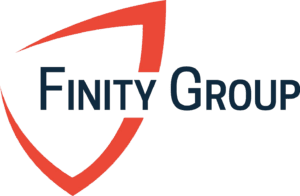Author: Peggy Haslach
Your last day on the job was a week ago. Your former company has a 401(k) plan, and you had been contributing the amount needed to receive the match. If your company is proactive, you might find a document in your separation papers that tells you the choices you have for the money that is in your 401(k). If you have not received the papers from your employer, you can request them from the company’s HR department, or you can call the client service number listed on one of your statements.
Usually, you have four choices on what you do with your account.
-
Leave your money with your former employer’s plan.
-
“Roll” the money into an IRA.
-
Move it to my new employer’s plan.
-
Take in cash.
Which option is best? As you can expect, my first reply is always, “It depends!” And that is because the best option depends on WHY you are no longer able to contribute to your employer’s plan. If you read the paperwork they gave you, written in it, you will have with the assumption that you will want to continue to contribute to your retirement savings, but that might not always be the case. For example, if you are retiring or are not able to work, option #3 is not an option you will want to consider. Likewise, if you are starting your own business or are moving to a company that does not have a retirement plan, then option #3 would not work, and option #1 does not allow you to continue to save.
If you are one of the 30 million people who lost your job because of the COVID 19 or the resulting downturn, then you might think that your only option is to cash in your 401(k). After the decline of 2008-2009, many women told me they fired their financial advisor or CPA because they lost their job (or divorced a spouse who lost their job) and cashed in their 401(k) to start a new business or start a new life. I expect we will see a similar result because of this crisis. In fact, I recently met with a client who said she did not want to make the same mistake twice!
So, when I work with clients, I start the conversation with the following questions:
-
What are your financial needs now?
-
Are you going to continue to work?
-
Are you going to continue to contribute to your retirement savings? If not, now, when?
-
What are your retirement plans?
Take The Money and Run?
There is a reason why many people fire their CPA or Financial Advisor when they cash in their 401(k). A great way to rile up a Financial Advisor or CPA is to say you want to cash in your 401(k). There are several reasons for this. First, if you are under age 59 1/2 and you cash in or take a distribution from your 401(k), you will be penalized 10% on the amount of the withdrawal. The second reason being the money you take out of your 401(k) or IRA is taxed as regular income. That can be a big chunk of taxes in a year, especially if your income puts you in a higher tax bracket. Can you afford to lose 15-30% of your money to taxes? And, for those of you who have a ROTH 401(k), you do not pay tax on the distribution, but there are a host of other rules that are in place, and you still have to pay the 10% penalty. The third reason to not take a withdrawal is the market. Now, I am not an advocate from trying to time the market, but right now, we are experiencing a very volatile market, and if you liquidate your account, you will lose more value when the market is down.
Can’t I take a hardship withdrawal?
Yes, you can take a hardship withdrawal, but there are strict limitations on what qualifies as a hardship. The new rules added because COVID-19 require that you, your spouse, or your dependent test positive, and you experience the financial consequences of not being able to work due to the illness (quarantine, layoff, furlough or reduced hours), lack of childcare, or the business is closed/has reduced hours because the business is owned or operated by someone impacted by COVID19. Bear in mind; the hardship withdrawal only waives the 10% penalty. You still must pay income tax on the money if it comes from a 401(k) or an IRA.
There is another reason why some clients and their advisors are at odds over cashing in your 401(k) or, taking a distribution from your IRA/Roth. From your perspective, it may be the only way you can eat and pay your bills. From their perspective, you are not listening to what they said, and they won’t get compensated if you cash in your account. If you feel that is your only option, rather than parting ways with your advisor, work with them or find a new advisor who can help you to make a plan of how you can take the distribution and then work on shoring up or rebuilding when the crisis is over. One thing to bear in mind is that you do not have to cash in the whole thing all at once. Work with the advisor to take the distributions in smaller chunks and then use one of the other options for the rest of the money in the account.
Should I stay, or should I go?
Returning to options 1-3 above, let us look at keeping your assets in your former employer’s plan. When you read the form, it makes it may sound like you have the option of staying in the plan. Some plans might have some unique investments where it would not make sense to move them out to a new plan. Other plans may allow you to stay with them, and though you cannot contribute, you may have a similar plan with your next employer. For example, some of the plans for teachers or federal employees will allow you to resume contributions if you start at a new school or government job. And, if you are part of the DRS system (DRS, TRS, SRS) or part of TIAA CREF, your account with your new employer is added to your statement along with those your previous employers.
Many plans have a stipulation that if you terminate employment, you will be transferred or forced out of a plan. If the balances are within a certain amount, say $5000, they will send you a check (see above as it will be treated as if you cashed in the account). If your account is over the $5000 threshold, they will transfer or “roll” it directly to an IRA, usually with the same institution that handled the companies 401(k). Some people assume this is a good way to go because they heard that their plan was a good one. And some excellent firms handle these accounts, but they are not free, and you will want to make sure you are aware of the fees and the investment options that you have with these plans.
Can I get assistance?
If you want some guidance, most plans will give the option for a complimentary one-on-one consultation with a “Retirement Representative who knows your plan and can help you assess your options.” Then you have the option of managing the money on your own or hiring a “professional portfolio manager” where you can have your account managed for you. Again, it is not free. One thing to bear in mind, all advisors are not the same, and you will want to work with someone you trust. You do have a right to choose the advisor. There are different dynamics when you work with an advisor who is working on a plan than when you work with an advisor that does comprehensive planning. For one thing, the advisors assigned to the plans are often working with multiple people. If you are one of many laid off at the same time, are the assigned advisors able to give you the help you need when you need it? And, are they going to want to work with you. I had one client who was assigned an advisor who asked about changing her investment objectives, and the advisor told her “No” and then told her to find a new advisor.
Can I use my own advisor?
Yes, and like my client, who was told to find a new advisor, you can either work with someone who helps you with your other accounts or find someone new. In most cases, if you already have a good working relationship with someone who helps you with your other accounts, you can ask them to help you roll the money into a new or existing IRA or ROTH IRA with them.
Whatever route you take, either using the plan’s advisor, using your existing advisor, or finding a new one, you will want to make sure that the advisor does not have a conflict of interest and has your best interest in mind. Financial professionals who help you with an IRA rollover, often do make some commission or fee from helping you set up that new account. They will not earn a fee if you cash it in, leave your assets in the old plan, or roll your money into your new employer’s plan. And, as I mentioned before, do not be surprised if an advisor will only work with you if you roll your money into an account that they manage or where they can make a commission.
Should I Find A Job With A Plan?
That brings us to the next option, rolling your money into your new employer’s plan. This is a fine option if you are moving directly from one employer to another and do not have an interruption in contributing to a plan. Often, however, you must wait until you have been there long enough to become eligible to enroll in your new employer’s plan. Also, if it takes some time for you to find a job, if your new employer does not have a plan (or a good plan), if you work part-time, become self-employed, or retire, you may want to look to find an advisor who can help you manage the account and provide you with other financial planning that you may need for this next part of your life.
Again, Which Is The Best Option For You?
Again, I would say “it depends” and instead of you making a choice on your own or handing it off to the advisor who managed the plan with your old employer, find an independent advisor who can go through all the options to find out which ones are the best for you. You will want an advisor who carefully reviews your current 401(k) plan. What type of investments are in the plan? Are there any alternative investments, annuities, or company stocks in the plan? Is it a regular 401(k) or ROTH 401(k)? Does the client also have a deferred compensation plan or some other sort of stock or option?
You will also want the advisor to learn more about you. They will want to know your tolerance to risk, your goals, and your objectives, not just for this account but for all your accounts. They will not only help you to learn what you have but will help you know what you can do to move forward. After all, it is your money!

Disclosures:
Investing in stocks and bonds involves the risk of loss, including total loss of principal. Consult with your investment advisor before implementing an investment strategy or making any investment decisions. Investing regular amounts steadily over time (dollar-cost averaging) may lower your average per-share cost. Periodic investment programs cannot guarantee profit or protect against loss in a declining market. Dollar-cost averaging is a long-term strategy involving continuous investing, regardless of fluctuating price levels, and, as a result, you should consider your financial ability to continue to invest during periods of fluctuating price levels.


